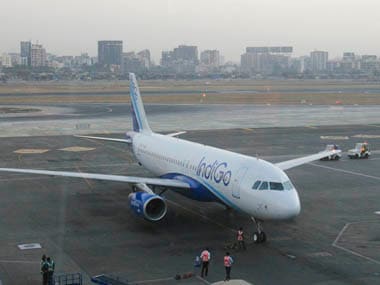As IndiGo prepares to tap the primary market for raising upto Rs 2,500 crore, the focus of attention is on the business model details it has shared in its IPO prospectus. India’s aviation leader with a 37 percent market share - and the only one to report a consistent profit over the last five years - has essentially one basic USP: lower operating costs. A demonic zeal in keeping costs low has made it India’s only viable airline. [caption id=“attachment_2129755” align=“alignleft” width=“380”]  Reuters[/caption] Peter Drucker, the late management guru, once said inside the company there are only costs. The profits lie outside, with the customer. The prime task of any business is thus to create a customer. IndiGo has succeeded because it has done both: managed its costs well, and created a new kind of airline customer - a profitable one. The key costs any airline has to manage are those of maintenance, fuel and debt – and IndiGo did that better than its main rivals. According to this Mint report, IndiGo’s maintenance costs were as low as 11 paise per available seat km (ASKM) against Jet’s 74 paise. ASKM is a metric used to figure out what it costs an airline to fly every seat for every one km of distance. And these costs are low because IndiGo does not keep any aircraft beyond six years, and maintains only one kind of aircraft (and hence does not need different kinds of engineering and maintenance support), among other things. Moreover, the airline flies its aircraft more hours than others, and turns around its aircraft faster (it keeps them flying 11.4 hours a day, the highest in India). These facts are well-known, but IndiGo’s core business model – stated or unstated – rests on two less obvious pillars: simplicity, and using customers to do some of its own work. The airline’s simplicity is obvious from the decision to use only one kind of aircraft for all operations, one brand identity, and one USP – on-time performance. The airline runs no frequent flyer programmes, and offers no in-flight frills or freebies. Barring corporate clients, food has to be fully paid for. This means every passenger gets onto an IndiGo primarily for the core benefit of timely arrival. The airline has used this insight to make customers a party to delivering this outcome. IndiGo routinely asks its passengers to report two hours before departure time, and even if few people actually do that, the message that on-time performance depends on your turning up on time is subtly emphasised. Over time, it sinks in, as the payoff is arriving on time. Customers invest their pre-departure time so that arrival time is maintained. This is interesting, for essentially you are wasting more time by arriving early at the airport – but you still do it because it benefits you in the end. The airline encourages you to print you own tickets and avoid having to spend lots of time at check-in counters. Again, you spend time and effort doing the airline’s job. More people also use the airline’s self check-in counters and print their own tickets than use the regular check-in counters. For late latifs, there is a Fast Forward counter which they can use by paying Rs 200. And then there is the in-flight cooperation. All passengers are regularly told that dumping their food waste in sacks carried by the air hostesses will help the airline maintain time. In short, you are encouraged to participate in garbage collection, even though this will benefit only the next flight. But again, the message has gotten home that if all passengers cooperate, the airline gets better for everyone. This is probably the most important thing the airline has done: creating value for all customers by allowing them to be part of the airline’s success story in on-time performance. In The Future of Competition: Co-Creating Unique Value with Customers, CK Prahalad and Venkat Ramaswamy argue that in a world of hyper competition, the consumer is no longer willing to remain a passive recipient of offerings from companies. When they want something, they are happy to help the company with advice and effort to deliver the right product or service. This is exactly what IndiGo has done. While the Kingfishers and Jets tried to provide value to customers with freebies, special treatment in business class and bonus miles for frequent travellers, IndiGo has instead taught the customer to help the airline deliver what they want. Kingfisher offered great food and free earphones. Customers were happy to take all that – but it did not let the airline make money in a low-margin business. In a low-margin business, the customer has to help create a part of the value and take some of the costs off the airline’s plate. This is how IndiGo really made high profits in a field where there are only rotting carcasses to be seen.
Why did IndiGo succeed where other airlines failed? The answer is it managed its costs well, and got a new customer, the kind that was willing to contribute to its success by co-creating value
Advertisement
End of Article
Written by R Jagannathan
R Jagannathan is the Editor-in-Chief of Firstpost. see more


)

)
)
)
)
)
)
)
)



